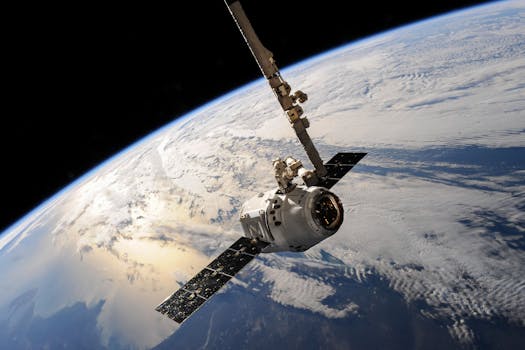The Future of Satellites: Revolutionizing Global Connectivity
The future of satellites is poised to revolutionize global connectivity, enabling faster and more reliable communication across the globe. With advancements in space technology, satellites are becoming increasingly important for a wide range of applications, from navigation and communication to weather forecasting and earth observation.

The Future of Satellites: Revolutionizing Global Connectivity
The future of satellites is poised to revolutionize global connectivity, enabling faster and more reliable communication across the globe. With advancements in space technology, satellites are becoming increasingly important for a wide range of applications, from navigation and communication to weather forecasting and earth observation. The future of satellites holds tremendous promise, and in this article, we will explore the latest trends and developments in the satellite industry.
Advancements in Space Technology
One of the key drivers of the future of satellites is the rapid advancement in space technology. New materials, designs, and manufacturing techniques are enabling the creation of smaller, lighter, and more efficient satellites. This has led to a significant reduction in the cost of launching satellites into space, making it more accessible to a wider range of organizations and individuals. Additionally, advancements in propulsion systems, such as electric propulsion and advanced ion engines, are enabling satellites to travel farther and faster, expanding their reach and capabilities.
Another area of significant advancement is in the field of satellite communications. New technologies such as high-throughput satellites (HTS) and very high-throughput satellites (VHTS) are enabling faster and more reliable communication services. These satellites use advanced technologies such as spot beams and frequency reuse to provide higher speeds and greater capacity, making them ideal for applications such as broadband internet and mobile connectivity.
Applications of Satellites
Satellites have a wide range of applications, from navigation and communication to weather forecasting and earth observation. One of the most significant applications of satellites is in the field of navigation. Satellites such as GPS and Galileo provide location information and timing signals, enabling a wide range of applications, from personal navigation to precision agriculture. Satellites are also used for communication, providing connectivity to remote and underserved areas, and enabling global communication services such as voice, video, and data transmission.
Satellites are also used for weather forecasting and earth observation. Satellites such as GOES and Meteosat provide images and data on weather patterns, enabling forecasters to predict weather events and issue warnings. Satellites such as Landsat and MODIS provide data on earth resources, such as land use, land cover, and natural resources, enabling scientists to monitor and study the environment.
Future Trends and Developments
The future of satellites is exciting and rapidly evolving. One of the key trends is the development of satellite constellations, where multiple satellites are launched into space to provide global coverage and connectivity. Companies such as OneWeb and SpaceX are developing these constellations, which will enable a wide range of applications, from broadband internet to mobile connectivity.
Another trend is the development of reusable launch vehicles, which are enabling the cost-effective launch of satellites into space. Companies such as SpaceX and Blue Origin are developing these vehicles, which will significantly reduce the cost of access to space and enable a wider range of organizations and individuals to launch satellites.
Conclusion
In conclusion, the future of satellites is poised to revolutionize global connectivity, enabling faster and more reliable communication across the globe. With advancements in space technology, satellites are becoming increasingly important for a wide range of applications, from navigation and communication to weather forecasting and earth observation. As the satellite industry continues to evolve, we can expect to see new and innovative applications of satellites, from satellite constellations to reusable launch vehicles.



